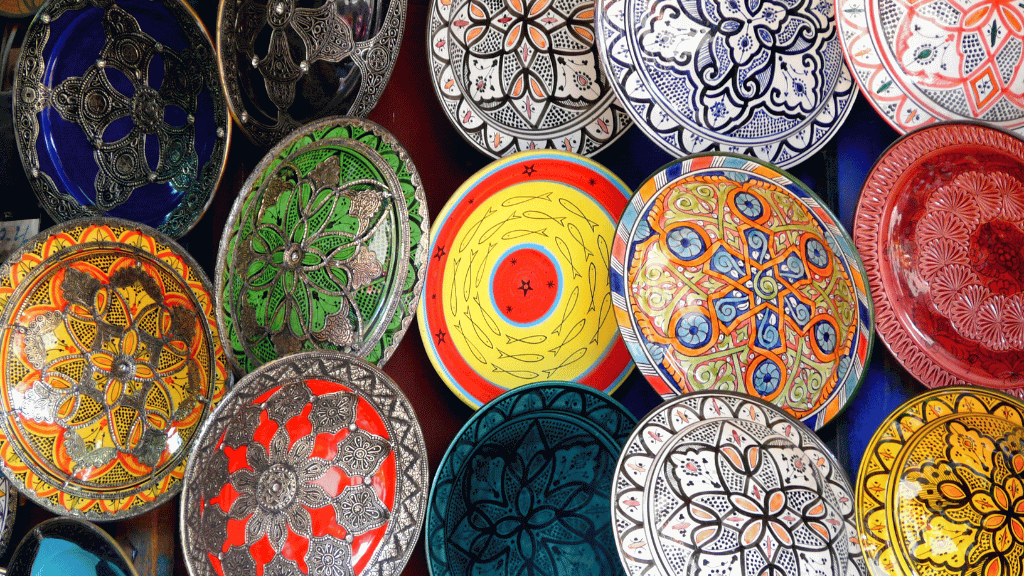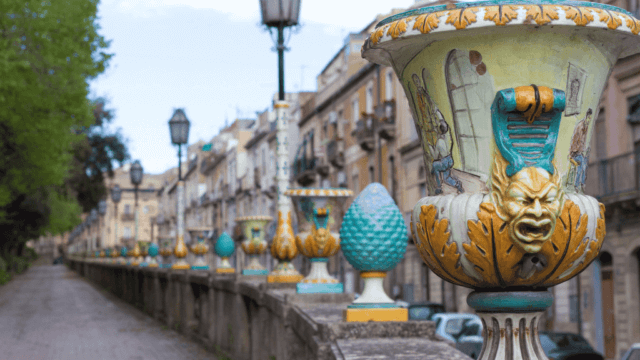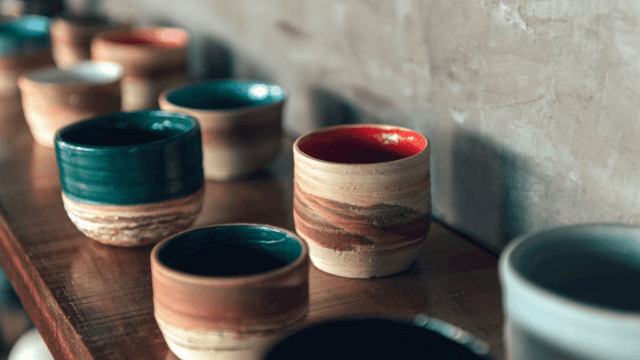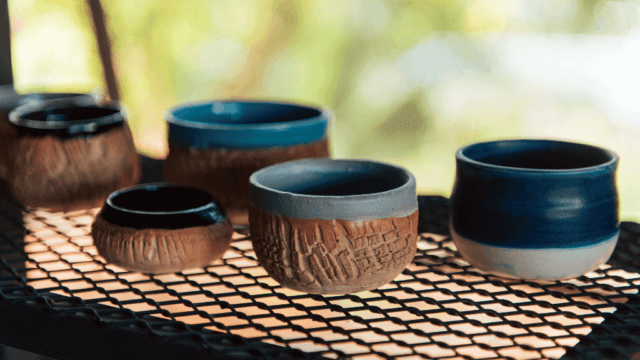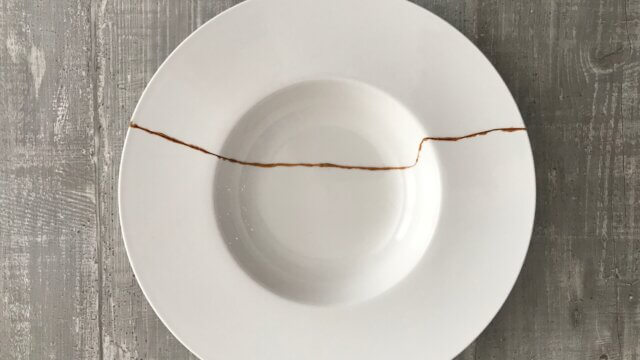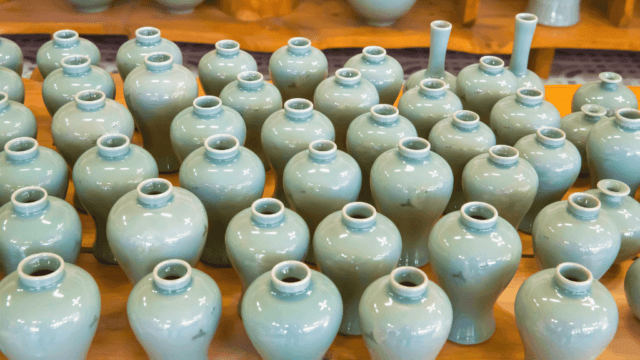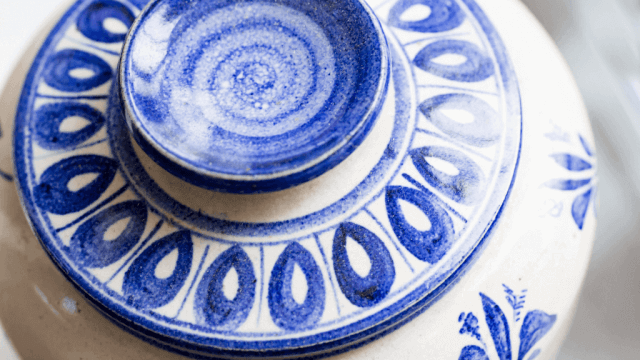Faience pottery is a type of non-clay ceramic made from crushed quartz or sand, mixed with other materials like soda, lime, and colorants.
It originates from ancient Egypt and is well-known for its bright colors, glossy finishes, and versatile applications in art, jewelry, and household items.
The faience glaze, often containing copper or other metallic oxides, gives it a vibrant, lustrous appearance and makes it highly sought-after in both historical and modern contexts.
Understanding Faience Pottery
Faience pottery is a non-clay ceramic crafted from materials such as crushed quartz, sand, soda, and lime.
This type of pottery has its roots in ancient Egypt and has been embraced worldwide for its vibrant colors, glossy finishes, and versatility in creating art, jewelry, and household items.
The distinctive faience glaze, often containing copper or other metallic oxides, grants its unique lustrous appearance, making it highly sought-after in both historical and modern contexts.
Composition and Manufacturing Process
Material Preparation
The first step in creating faience pottery involves preparing the raw materials.
Crushed quartz or sand is mixed with soda and lime to form a paste-like substance.
These components act as a flux, lowering the melting point and allowing the materials to bond during firing.
Finely ground copper or other colorants are then added to the mixture to create the desired color for the final piece.
Shaping and Molding
The prepared faience paste is then shaped and molded into the desired object.
Techniques such as hand molding, coiling, slab work, or the use of molds can be employed.
The method used depends on the artistry preference and the desired properties of the final piece.
Glazing and Firing
After the object is shaped, a layer of faience glaze is applied.
The glaze, containing copper or other metallic oxides, gives the piece its characteristic vibrant and lustrous appearance.
A single or multiple layers of glaze can be used, affecting the final appearance and texture.
The pottery is then fired at high temperatures, usually between 900°C and 1100°C, causing the quartz paste to vitrify and the glaze to create a shiny, impenetrable surface.
Applications of Faience Pottery
Art and Sculpture
Faience pottery’s aesthetic appeal makes it a popular choice for creating art and sculptures.
The vibrant colors and glossiness provide a visually captivating appearance, while its versatility allows for the crafting of intricate designs.
Jewelry and Accessories
The rich colors, durability, and lustrous sheen of faience make it an ideal material for creating various forms of jewelry, such as necklaces, bracelets, earrings, and rings.
Its lightweight nature also makes it comfortable to wear.
Household Items and Décor
Faience pottery has seen applications in crafting decorative and functional household items such as bowls, plates, vases, and tiles.
Its unique characteristics offer an artistic touch to everyday objects, enhancing the overall aesthetic of any environment.
Historical Significance of Faience Pottery
Faience pottery can be traced back to ancient Egypt, where it was highly valued for its symbolic representations and intricate designs.
Egyptians used faience to create various items, such as amulets, figurines, and wall decorations.
They believed faience had protective and life-giving properties, making it an essential component in funerary and religious contexts.
Over time, the art of faience production spread to other cultures, including Mesopotamia, Persia, and Greco-Roman civilizations, further enriching its significance and popularity.
Regional Variations of Faience Pottery
As faience pottery spread across different regions, it took on distinct characteristics based on the local available resources and cultural influences.
Some renowned regional styles include:
Delftware
Originating in the Netherlands in the 16th century, Delftware is characterized by its blue and white decorations on a white faience body.
The designs typically depict landscapes, animals, and scenes inspired by Chinese blue and white porcelain which was popular in Europe at the time.
Quimper Faience
Quimper faience, a traditional French pottery style, dates back to the 17th century.
Known for its distinct, colorful designs featuring Breton figures, birds, and floral patterns, Quimper faience remains highly collectible and continues to be produced today by skilled artisans.
Majolica
Majolica, originating from Renaissance Italy, is a type of faience pottery adorned with vibrant glazes and intricate, often nature-inspired, designs.
Its popularity peaked during the 15th and 16th centuries, but the style continues to inspire potters and collectors today.
Caring for Faience Pottery
Proper care and maintenance is essential to preserving the beauty and durability of faience pottery.
Here are some tips:
- Avoid exposing faience pottery to extreme temperature changes, as this can cause cracking or damage to the glaze.
- When cleaning, gentle handwashing with mild soap and water is recommended.
Aggressive scrubbing or harsh chemicals can result in scratches or damage to the glaze.
- Faience pottery can be fragile, so handle it with care and store it securely when not in use.
Store it in a dry and stable environment to prevent cracking, chipping, or fading.
Frequently Asked Questions about Faience Pottery
In order to help you better understand and appreciate faience pottery, we have compiled a list of common questions and their direct answers related to this rich art form.
Here, we address aspects of faience pottery related to its properties, production, and care.
Can faience pottery be used with food or for cooking purposes?
Generally, faience pottery is not recommended for cooking or serving hot foods, as it may not withstand sudden temperature changes and could crack.
Additionally, some glazes may contain toxic substances, like lead, that can leach into the food.
However, many modern faience pieces are safe for serving cold or room-temperature foods if indicated by the manufacturer.
What is the difference between faience pottery and earthenware?
Faience pottery is a non-clay ceramic composed of crushed quartz or sand, mixed with soda and lime, while earthenware is made of clay, typically fired at lower temperatures.
Faience is known for its glossy, vibrant appearance achieved through specific glazing techniques, while earthenware often has a more matte, earthy look.
How can I identify genuine faience pottery?
Genuine faience pottery is known for its bright colors and glossy finish, achieved through the unique glazing process.
It often has a porous, slightly grainy texture due to the quartz or sand content.
Examining the piece’s design, styistical elements, and overall appearance in comparison to known examples from relevant regional styles can help identify authentic faience pottery.
How do I estimate the value of a faience pottery piece?
Estimating the value of faience pottery depends on several factors, such as age, rarity, condition, provenance, and artistic merit.
Consulting a professional appraiser or researching auction records for similar pieces can give you a more accurate idea of the item’s worth.
Are there any potential health risks associated with faience pottery?
Historically, some faience glazes contained toxic substances like lead, which can pose health risks if used for food service.
However, contemporary faience pottery is typically made with lead-free glazes, ensuring safer use.
It is essential to be aware of the origin and production methods of the pieces you intend to use for serving food or drink to mitigate any potential health risks.
